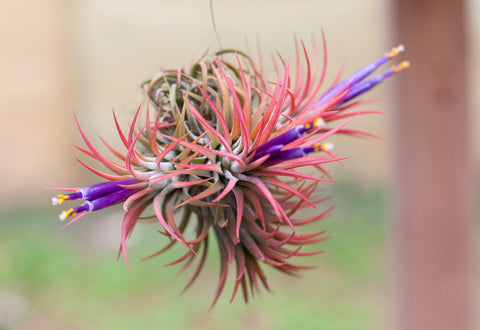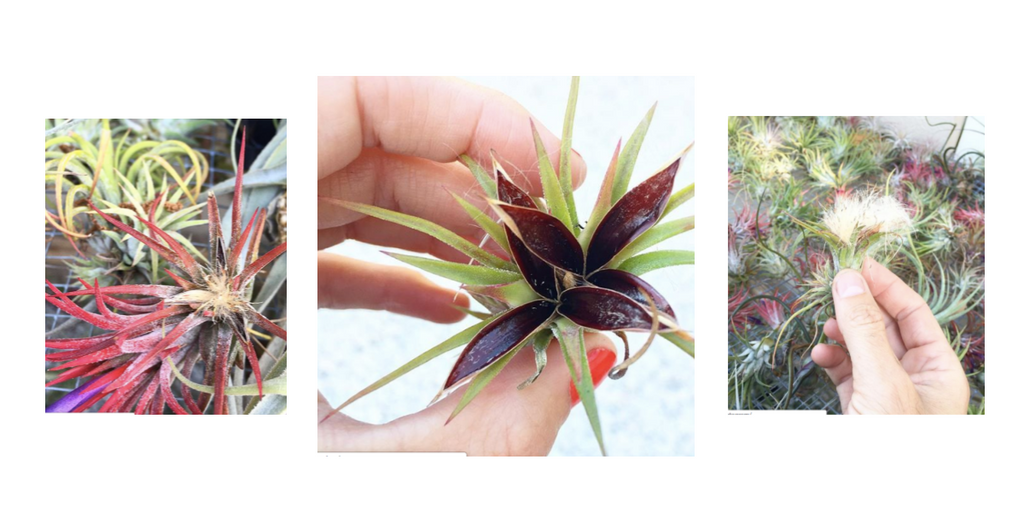
Air Plants + Pollination
Have you ever wondered how tillandsia air plants get pollinated? In the wild they get pollinated by bees, hummingbirds, other insects and even bats. For the most part though air plants self pollinate. When a pollen from a plant’s stamen is transferred to the same plant’s stigma, it is called self pollination.

Image: Britannica
Pollinators also do their part in cross-pollinating Tillandsia in the wild, which is where pollen sticks to the bee or wasp and is then transferred to the pistil of another plant of the same species. Tillandsia hybridizers have created some really neat hybrids by cross pollinating two species of air plants together. These hybrids include the T. Curly Slim, which is a hybrid of the T. intermedia x T. streptophylla, and the T. brachycaulos hybrid, which is a hybrid between the T.brachycaulos x T. concolor air plants. Pretty neat huh?

Image: Britannica
Once an air plant has bloomed, it will start to put energy into producing pups. You can learn more about pups in our article about Air Plant Propagation. You might not know this, but air plants can also produce seed pods and seeds. Seed pods only form if a Tillandsia flower has been pollinated. Otherwise, the plant will just grow pups and will not produce seeds.
There are some plants that are considered “self-incompatible” meaning that they cannot self-pollinate and rely on pollinators to pollinate for them. Some air plants that are self-incompatible and require pollinators are the T. caput medusae and T. streptophylla. Some common pollinators you would see if you were in the rainforest would be bees, wasps, flies, hummingbirds, other tropical birds, and even some bats. Air plants are unique in that they don’t need to be pollinated to produce pups though, so don't worry about pollinating your air plants.
 Image courtesy of Cayaya Birding in Guatemala
Image courtesy of Cayaya Birding in Guatemala
You might have noticed that most air plants have bright tubular flowers, which are perfect for pollinators such as the hummingbird to pollinate. Flowers have adapted over time to have bright colors, plus an attractive floral scent to attract pollinators. Most air plants do not have scented flowers, but the bright red, pink, and purple tubular flowers of the Tillandsia species are what attract pollinators to them. There are a few exceptions to this though. Air plants with scented flowers include the T. duratii, T. straminea, and T. crocata among others.

This ionantha rubra clump has beautiful tubular purple flowers, ready to be pollinated.
If one of your air plants has indeed been pollinated, you might notice that after blooming there are seed pods forming where the flowers were. Inside these seed pods are seeds that are encased in fluffy hairs, called a parachute or COMA. It can take quite some time for seed pods to develop and once they are ready, they will split and release the seeds. The fluffy hairs act as a parachute to send the seeds through the air. The hairs are also quite coarse which allows them to attach to bark, rocks, or other plants, and begin to germinate and grow. Air plants grown from seed take a very long time to grow, so be patient!

Here you can see the parachute or COMA of the air plant seeds. The middle image is the pods after the seeds have been removed.























